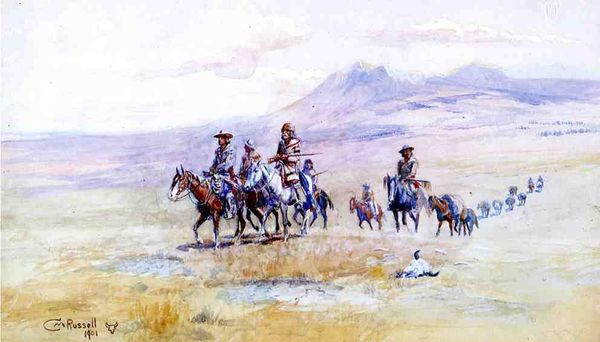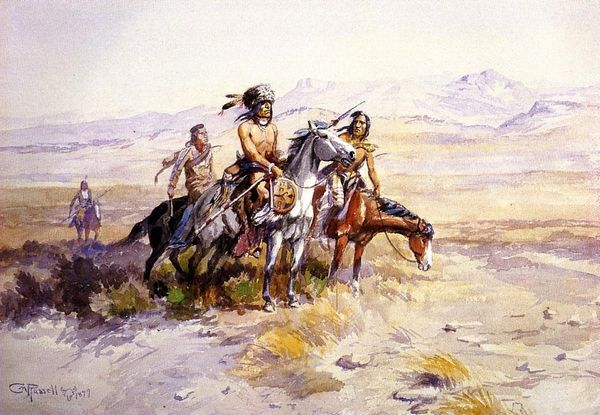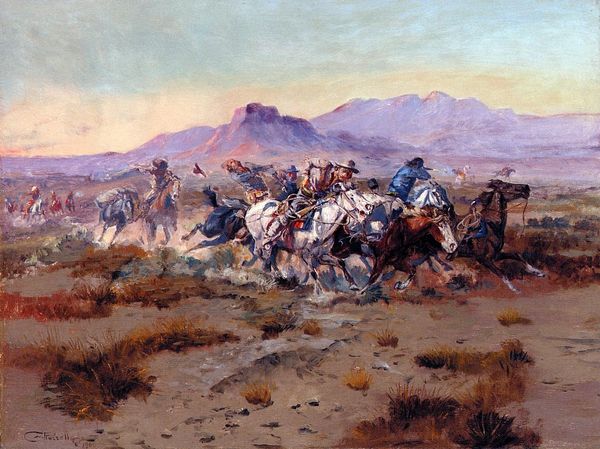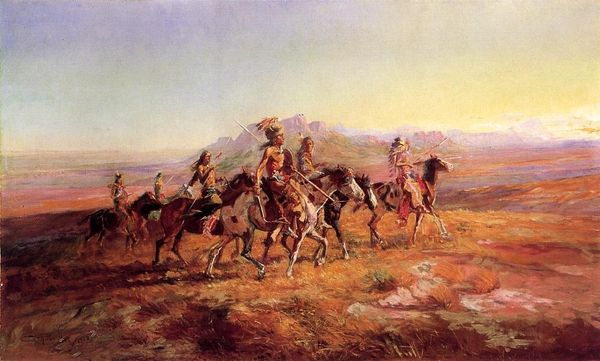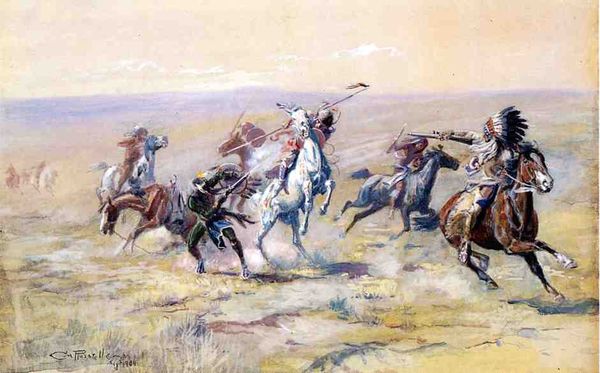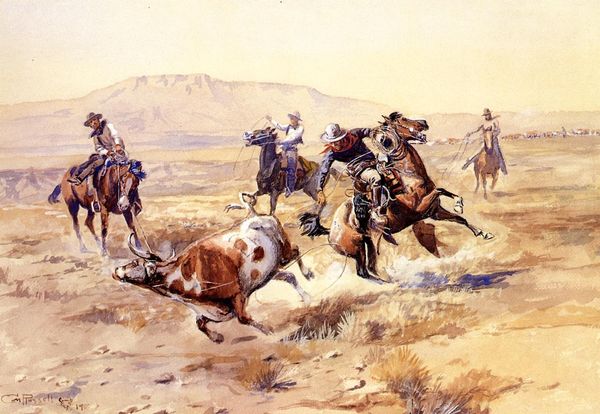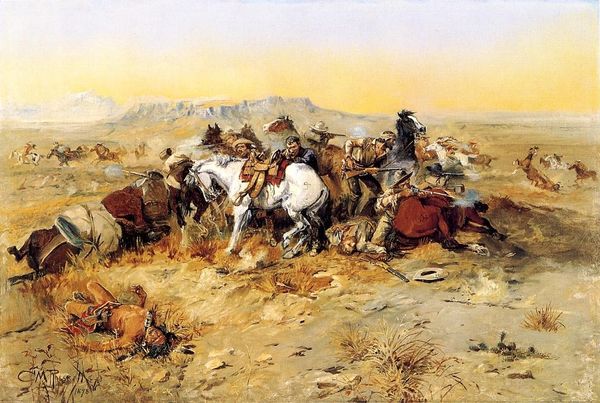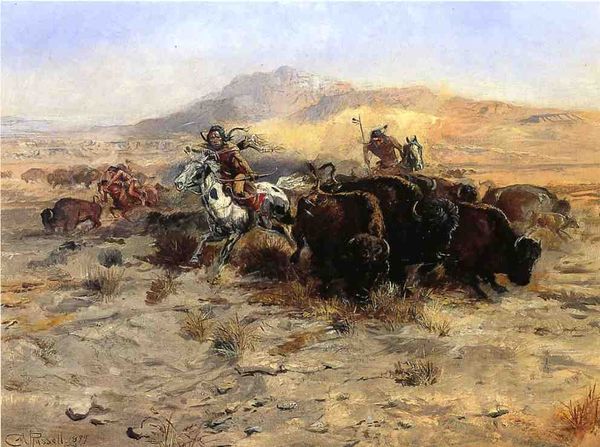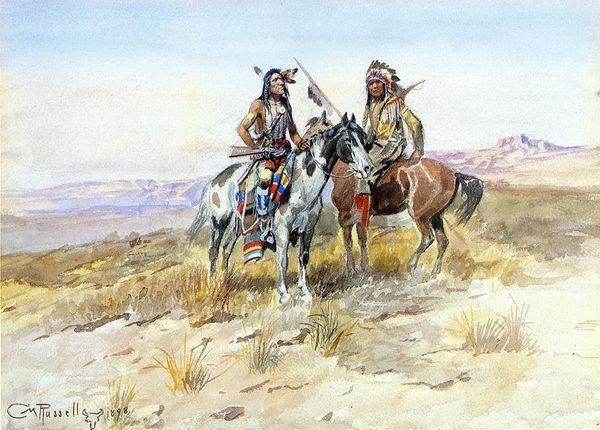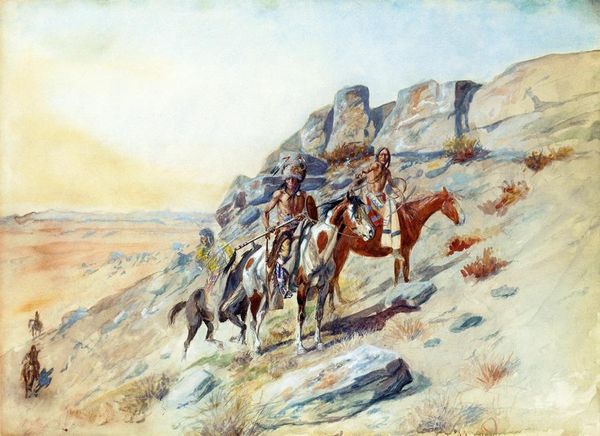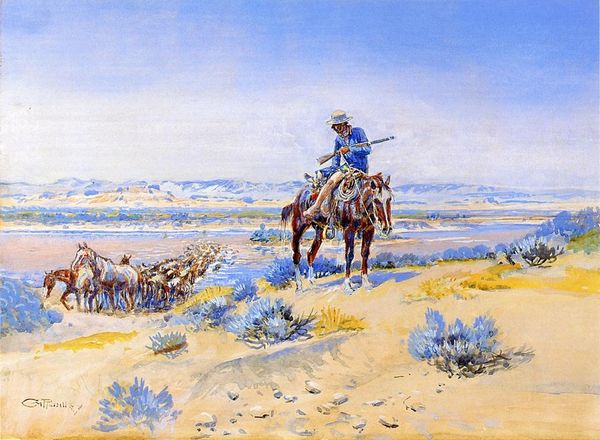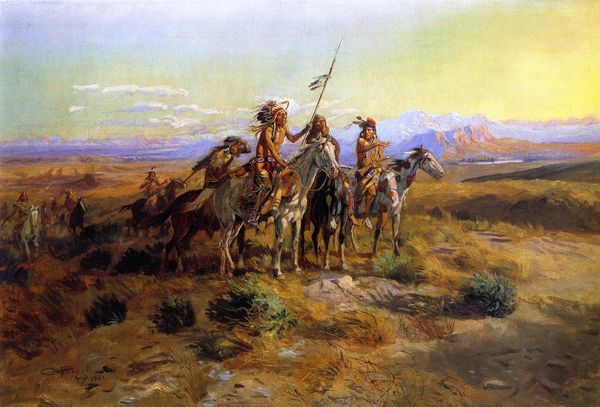
#
narrative-art
#
landscape
#
figuration
#
watercolour illustration
#
watercolor
#
indigenous-americas
Copyright: Public domain
Charles M. Russell made this watercolour painting, called 'Indian War Party,' at the turn of the 20th century. The light is clear and bright, and the palette is a dry, sun-baked mix of tans and yellows, blues and greys. The paint seems applied thinly, almost washed on, which gives the surface an arid, dusty kind of feel. I find my eyes are drawn to the bleached-out bones in the left foreground, and the figure of the lone scout heading towards the distant horizon. There is a real sense of vulnerability in this image. It’s not just about the dramatic war party, but also about the more subtle signs of life and death on the plains. Russell captures the epic scale of the landscape and the precariousness of existence. This painting has a kind of raw authenticity, and it puts me in mind of the work of Frederic Remington. I love how both artists embrace the ambiguity of the West, leaving space for multiple interpretations, and letting the landscape speak for itself.
Comments
No comments
Be the first to comment and join the conversation on the ultimate creative platform.
